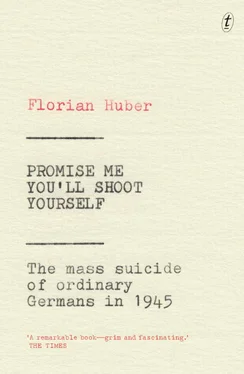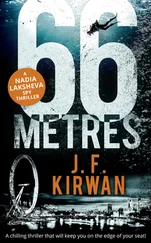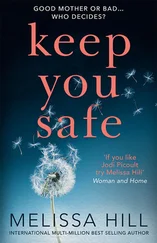• • •
An hour further south is Neustadt an der Weinstrasse, where elementary school teacher and regional poet Leopold Reitz was a member of the Nazi Party and local group leader. Reitz came from a family of vintners, and most of his poems are devoted to the topic of winegrowing; they celebrate, in bucolic tones, the vineyards of his home soil and the charms of the Palatinate countryside. When war broke out, he began to keep a diary, which shows his struggle to define his own position. He is often vague and elusive, taking refuge in longwinded descriptions of nature. Leopold Reitz shrank from self-examination, unable to judge or justify himself or his involvement in the party.
He was, though, perceptive enough to have noticed a change among his fellow townspeople since war first broke out on the Eastern front in 1941—known in Germany as the ‘year of the great murder’, or the ‘year of widows and orphans’. As the casualty rate soared, soldiers’ death notices in the newspapers were no longer displayed as prominently; they literally shrank in size, so numerous now that they had lost their earlier shock value. People waited daily for telegrams bearing news of loved ones’ deaths. ‘Death is no longer sublime,’ Reitz wrote. ‘Dying has become more of a matter of course.’ As the end of the war drew near, he noted, people were responding to the Nazis’ jingoistic propaganda with increasingly fatalistic slogans of their own. ‘The motto of the day is: make the most of the war, because peace is going to be dire.’
When his son-in-law pays an unexpected visit from the front, having survived the retreat from France, Reitz finds him neither glad to be home, nor relieved to have escaped death. Instead, he is demoralised, apparently done with life, unable to imagine a future for himself and his family. Reitz observes:
Not only before battle—at home, too, a soldier has to come to terms with himself. Or as people say here: ‘Anyone still alive in 1945 has only himself to blame.’
Meanwhile, he said, the wireless blared out heroic folk songs about the sweetness of dying for one’s country.
In late March, American troops captured Neustadt. A few days later Leopold Reitz heard that the head of a local viticulture school had hanged himself. This was the first in a series of suicides to be mentioned by Reitz. ‘Hanged, shot and arrested are now words as common as eat and drink.’ He continued to record such cases until May 1946, a year after the war ended. The last, Frau R. from Gommersheim, hanged herself—from a sense of guilt, Reitz guessed, and out of despair at the death of her fallen son. ‘The list of dead friends and acquaintances grows longer and longer,’ he wrote. ‘Dr Müller and his housekeeper had already written suicide notes, but let themselves be talked out of it.’
The suicidal mood was widespread elsewhere in western Germany too. Mathilde Wolff-Mönckeberg, a well-off middle-class woman from Hamburg who kept a kind of journal in the form of unsent letters to her children, observed it in her own family, even before the war had really got going. Anticipating the destruction to come, her daughter, Jacoba, thought of taking her life together with her husband and their five-year-old son. ‘I could see the idea taking root in her,’ Wolff-Mönckeberg writes. ‘I could see the despair in Jacoba’s usually clear eyes.’ In Hamburg, as in other parts of the country, the news of Germany’s defeat in the Battle of Stalingrad in February 1943 prompted many people to speculate out loud about the end of the war and the arrival of the Allies. Mathilde Wolff-Mönckeberg reports that a Frau Schlensog told her there would be nothing left but to take poison. She said it quite calmly, apparently, ‘as if she were suggesting pancakes for dinner tomorrow’. Wolff-Mönckeberg’s ex-husband did indeed go on to commit suicide a few months after British troops marched into Hamburg, one of many in that city who chose to end their lives at this time.
In Giessen, in Hesse, a fifteen-year-old schoolboy records in his memoirs how his teacher, the irritable Herr Frank, poisoned himself along with his wife when the Americans entered the town. In the small village of Södel, an elderly businessman hanged himself in his garden after writing a suicide note: ‘I am awfully sorry to leave you, but you mustn’t hold it against me; the war compels me.’ In the neighbouring town of Friedberg, a thirty-five-year-old man hanged himself on 4 February 1945. His wife then killed their two small children and slit her own wrists.
In February 1945, a young woman from Ostwestfalen heard from a fellow student about the many crimes committed over the course of the war in the name of the German people. ‘A friend of mine killed herself when she heard the truth,’ the young woman said, ‘and she wasn’t the only one.’
In Upper Bavaria, the authorities registered ten times as many suicides in April and May as in the same months in previous years. Two German psychiatrists investigating suicidal behaviour in northern Baden and Bremen established that there had been a steep rise in numbers in both places in 1945.
From the front, too, soldiers sent news of the deaths of many comrades who were unable to cope with defeat and loss of faith. An officer in Norway reports in his war journal on 4 May 1945: ‘A wave of suicides is beginning. Officers ring up to say goodbye before they die.’ In Rotterdam, a sailor in the German navy heard bells ringing during his watch on 8 May and realised that the war was over. He decided to shoot himself when his watch came to an end. ‘Given my conduct throughout the war, I had no hope of survival, and felt that only death could mask my shame.’
Of the many thousands of scenes from the German suicide epidemic, only a handful were photographed. This was partly because of the chaotic circumstances, the official ban on photography and a lack of resources. It was also because nobody—neither friends and relations, nor the authorities, the military or anyone else dealing with the dead—felt inclined to capture the macabre sights on film.
Among the few exceptions, a series of photographs taken in Leipzig’s new town hall in April 1945 stands out as remarkable. A heavily furnished office with dark wooden panelling and damask wallpaper is side-lit through tall casement windows. A wooden desk faces a massive upholstered sofa, a matching armchair and a large gilt-framed landscape. The floor is covered by a Persian carpet. The furniture and office paraphernalia—telephone, inkpad, inkwell—are covered in a layer of dust. Everything about this room is sombre and ponderous—everything except the three delicate human figures that inhabit it. With their neat clothes and hair, these figures look like a small party of travellers, about to set off on a journey. But they are all dead. The man sits in a chair, his head slumped on the desk, between his hands. He is wearing a discreetly patterned civilian suit and a shirt with cufflinks. The older woman is about his age. Dressed in a skirt and winter jacket, she sits opposite him, draped across a leather armchair, her left arm hanging over the armrest, her outstretched index finger hovering above the pattern of arabesques on the carpet. Behind her, a young woman in a long coat lies on the leather sofa, her legs stretched out in front of her, feet crossed at the ankle.
As the US Army’s first female war correspondent, thirty-nine-year-old photojournalist Margaret Bourke-White had followed American troops to England, North Africa and Italy; now, in the spring of 1945, she was accompanying General Patton’s Third Army through Germany as it captured large swathes of territory. She saw the thwarted Germans through a victor’s eyes: in their grim hysteria, fighting for mere inches of ground as their entire nation was torn to shreds, they seemed to her like beings from another planet. ‘What kind of people were these,’ she asked, ‘whose acquiescence, either passive or criminal, had made it possible for such evil forces to grow? How deeply had the ferment in the secret depths of Hitler’s country eaten into the soul of the average man?’
Читать дальше












